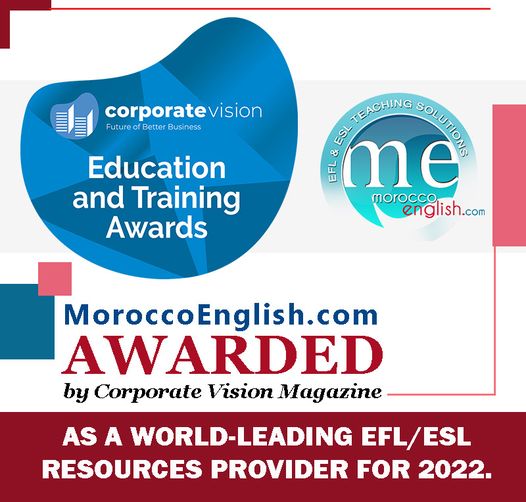5. THE BUTTON GAME
MATERIALS: A lot of old buttons, at least three or four for each student.
VOCABULARY:Large, small, round, number of holes, square, thick, thin, all colours, with a rim, gold, copper, silver, bronze, fuzzy, felt, material, etc.
OBJECT: To trade with a classmate and end up with four (or other decided number) buttons which are similar/identical.
Students must (in English, of course) trade among themselves and try to obtain 4 buttons which look similar. When trading, they must always trade one for one. Do not let them show their buttons to each other.
Example:
a: Do you have a big, red button.
b: Yes, I do.
a: What button do you need?
b: I need a gold button.
a: I’ll trade you a gold button for your big, red button.
Then, A and B move on to other people.
6. COLOUR CALL
DESCRIPTION: Have the class stand in a circle. With a beanbag in hand, call out a colour and toss it to a student at the same time. That student must catch it and call out something of that colour. The student then tosses the beanbag to another and calls out a colour, and so on.
Example:
player 1: Blue! (tosses the beanbag)
player 2: Sky! (〃 〃 〃)… Green!
player 3: Grass! (〃 〃 〃)… Red!
player 4: Tomato! (〃 〃 〃)…
OPTIONS: Colours may be repeated, but the answers should be different. In a large class this could be played in teams. Have each team stand facing each other instead of using a beanbag.
MATERIALS: Beanbag or some other small tossing object.
REMARKS: This can be played by eliminating each student who repeats a word, gives a wrong answer, or no answer. This is perhaps good only for “keen” students. Be careful, as some students may pick on the weak students.
7.FIND SOMEONE WHO
DESCRIPTION: For this game, the students must find someone who can say “yes” to the questions on a questionnaire. When they find someone who says “yes”, they should have that person write their name on the list (next to the statement).
Rules: Students must ask the questions in English.
One student may sign the same paper only three times.
Example:
A: Do you like ice cream?
B: Yes, I do.
A: Please sign my paper.
Example: A: Do you like baseball?
B: No, I don’t.
A: Thank you.
__________________ likes ice cream.
___________________ likes professional wrestling.
___________________ has an older brother.
___________________ has been to another country.
___________________ is wearing blue socks.
___________________ likes English.
___________________ has a birthday in October.
___________________ wears glasses.
___________________ doesn’t like natto.
___________________ has a pencil case with no English on it.
___________________ likes baseball.
___________________ likes this game.
___________________ has climbed Mt. Fuji.
___________________ is a good cook.
___________________ has a cat.
___________________ watches sumo tournaments on TV.
___________________ likes to draw pictures.
___________________ doesn’t like mathematics.
___________________ has a younger sister.
REMARKS: Set various limits to create different games: for example, use only “like” sentences or use only “have” sentences, etc.
8.WHO AM I?
DESCRIPTION:
Students are given 20 questions to guess who the person you are thinking of is. They can either ask YES/NO questions or more specific questions, such as “What colour hair do you have?” or “What country are you from?”
Famous leaders, movie stars, pop idols, athletes, classmates, etc. are appropriate.
OPTIONS:
You can have the students take turns at being “someone”, or have them play in small groups taking turns at being the star.
REMARKS:
Make this more exciting by really acting your part!
VARIATION:
Divide the class into two teams and assign each a name. First tell the kids that you will give them hints about a person, place, or things. If they can guess “who I am” after the first hint, award their team five points. If they cannot guess, give the second hint, which is worth four points etc. Here are a few to give you a good start. You can think of some more of your own.
Examples:
MICKEY MOUSE
1. My girlfriend’s name is Minnie.
2. I live in Disneyland.
3. Donald Duck is my friend.
4. I have big, round ears.
SANTA CLAUS
1. I am a fat man with a white beard.
2. I am very busy at Christmas time.
3. I wear a red suit.
4. I have nine reindeer.
THE OLYMPICS
1. I am an event that started in Greece.
2. In Japan, I was in Tokyo, Sapporo and
Nagano and my symbol is 5 rings.
3. People from all over the world come to me.
4. I have a summer and winter part.
ICE CREAM
1. I am a food that you lick.
2. Eat me fast, or I will melt.
3. I am soft and cold.
4. I come in vanilla and chocolate flavours.
9.WHAT’S IN THE BAG?
DESCRIPTION:
Put several objects in a bag (coin, ball, pencil, etc.) and have the students ask you Yes/No questions to determine what the object is (have one object in mind per set of questions). For junior high, write and practice appropriate sentence patterns. These patterns often parallel the grammar in their textbook and teach them how to narrow down the choices with their questions, e.g. “Yes, it is a coin, what KIND of coin is it?”
Another way you can play this game: put the objects out on a desk and go over the names of each. Put them back in the bag and then have one student come to the front and choose an object from the bag (only you and the student know which object). Have the class ask questions to find out which object was chosen. Prepare cards with the kind of questions they should ask, e.g. What colour is it?
OPTIONS:
What shape is it? Can you eat it? Use the cards as “cue cards”.
Here are questions that high school students could use:
• Tell me about ____.
• Is it ____? (small, heavy, etc.) • Is it made of ____? (wood, paper, etc.)
• Is it bigger than a ____? • Is it smaller than a ____?
MATERIALS:
Objects, bag, cue cards.
REMARKS:
Good game. Works with many different levels and types of students.
Communication Activities
More Communicative Activities :
Class Survey, Can’t be Missed Activity In Communicative-Oriented Classes
Conversation Grid Activity To Promote Authentic and Cooperative Communication in English Classes







































